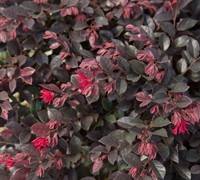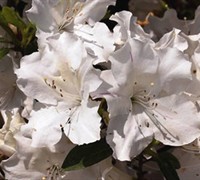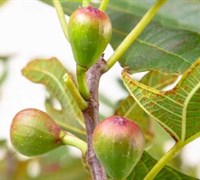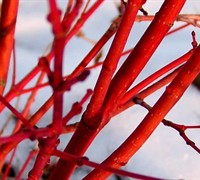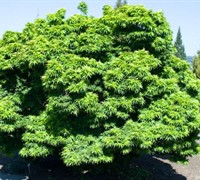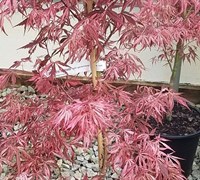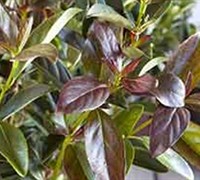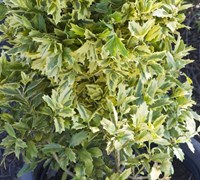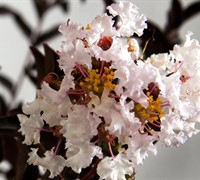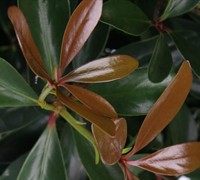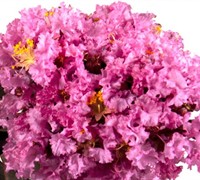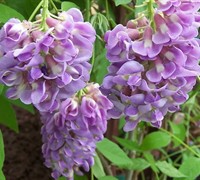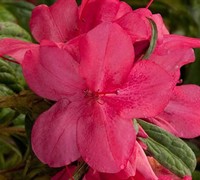Poisonous Alkaloids
Imagine that you are a plant. With your roots stuck firmly in the ground you have no way of outrunning or outmaneuvering your predators. And you have plenty of predators… insects and herbivorous mammals who would love to chomp on your tender leaves and stems, bacteria and pathogens that would love to infect you. What do you do? How do you fight back?
This is a very real, unique problem faced by plants – how to deal with a predator when you can’t run away. One of the ways that plants deal with their predators is by producing secondary metabolites, including alkaloids. Secondary metabolites are compounds produced by a plant which are not necessary for the normal growth and functioning of the plant, but are rather produced as defense mechanisms to protect the plant from herbivores and pathogens (or as a means of mutualistic communication with other organisms, a topic for another day). Alkaloids are specifically nitrogen-containing compounds, many of which are produced by plants as secondary metabolites, which have pronounced physiological effects on humans (and other animals). Many plant alkaloids (in small doses) are used as medicinal and recreational compounds, although most of them are dangerous in large amounts. I will highlight some of the more common alkaloids, most of which I’m sure you’ve already heard of, even if you didn’t know what they were!
Nicotine: Nicotine is an alkaloid produced by the nightshade family of plants (Solanaceae) and derives its name from the tobacco plant (Nicotiana tabacum) from which it was first isolated. This family of plants produce nicotine as an insecticide, and it was classified as a poison when first discovered. Nicotine binds to acetylcholine (a neurotransmitter) receptors in our nervous system and acts as a stimulant which is highly addictive. The amount of nicotine in tobacco products is very small; however, nicotine is still a poisonous alkaloid and can be fatal in high amounts.
Caffeine: Caffeine is another plant alkaloid that humans have taken advantage of. In fact, it is the world’s most widely consumed psychoactive drug. About sixty plant species produce caffeine, most notably the coffee plant (Coffea arabica), the tea tree (Camellia sinensis), and the cocoa bean (Theobroma cacao). Caffeine is used by the plants as a pesticide and to inhibit the growth of surrounding plants to give the producing plant more room to grow. In small amounts in humans, caffeine acts as stimulant by blocking the receptors of a drowsiness-inducing neurotransmitter (adenosine). In large amounts, caffeine is dangerous as are most of the plant-produced alkaloids (yes, caffeine intoxication is a real thing).
Morphine: Morphine is believed to be one of the first secondary metabolites ever isolated from a plant. The primary plant source of morphine is the opium poppy (Papaver somniferum). Morphine is a highly addictive analgesic (painkiller) and is the starting molecule for the production of many other opiates (heroin, oxycodone, codeine, etc.). The opium poppy plants produce morphine (and other alkaloids) in response to stress (such as when the seed pods are cut or otherwise mechanically damaged), and it has been hypothesized that the alkaloids in this case act to stabilize the wound and to prevent pathogen attack at the site of the wound (Morimoto et al. 2001). In humans, morphine also decreases respiration and lowers blood pressure in addition to its painkilling effects, and morphine overdose rapidly results in asphyxia.
Quinine: Quinine is an alkaloid isolated from plants in the Cinchona genus. It is commonly used by humans to treat malaria (caused by a parasite), although it can also be fatal to humans in large doses. Given its toxicity to parasites and other animals, the quinine is likely being produced by the plant as a defense mechanism against predation.
It should be clear by this point that plants produce a wide range of toxic alkaloids for defense. Humans have found uses for many of these compounds in medicine and recreation (in small doses). The plants actually intended this compounds to be used for defense against herbivory. It is quite ironic that many of these plants are now grown and cultivated for the sole purpose of isolating these alkaloids. There are many, many different types of plant alkaloids, and I only touched on the more common ones in this article. Other common plant alkaloids include cocaine, theobromine, vincristine, atropine, ephedrine, and many others (all of which are easily searchable on Wikipedia).
The next time you are enjoying your morning pick-me-up cup of coffee, consider that you are actually drinking a compound that the coffee plant made for its own defense!



